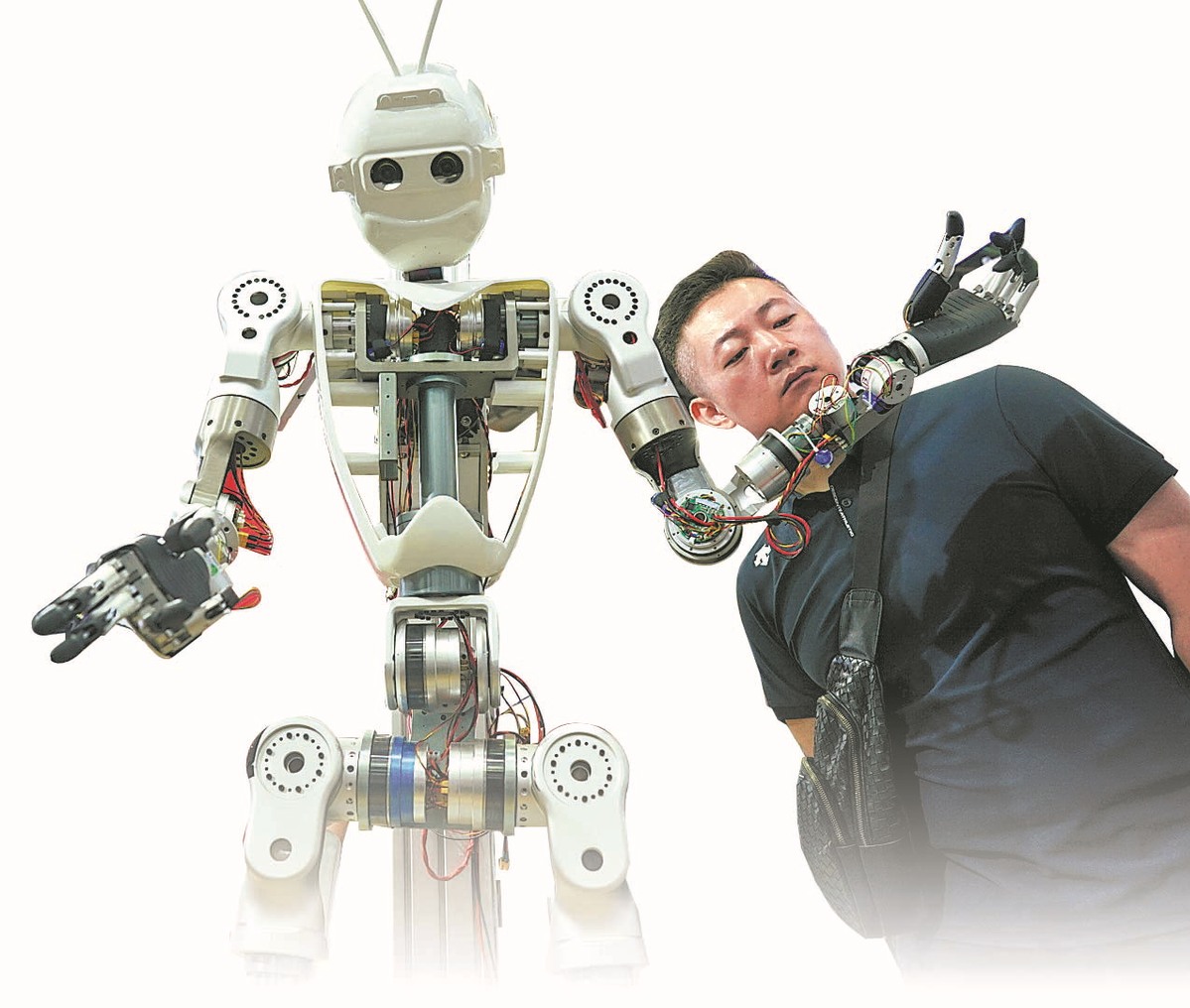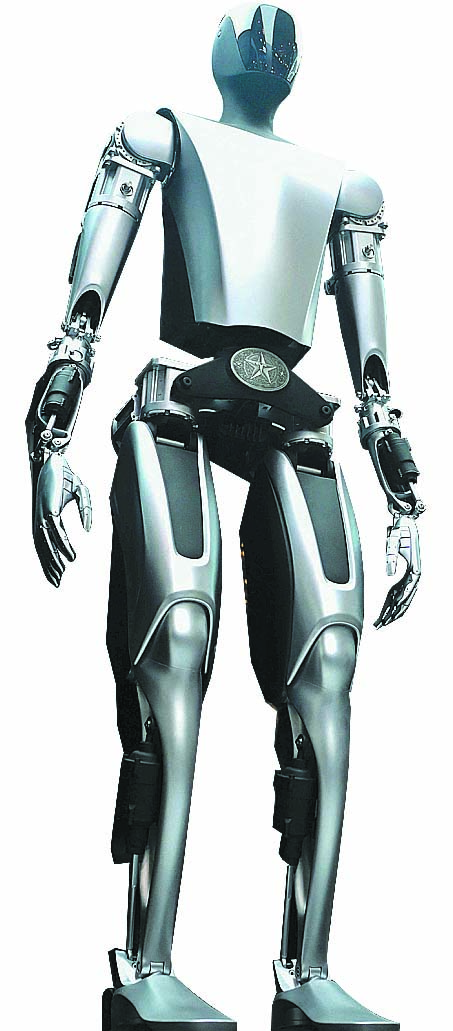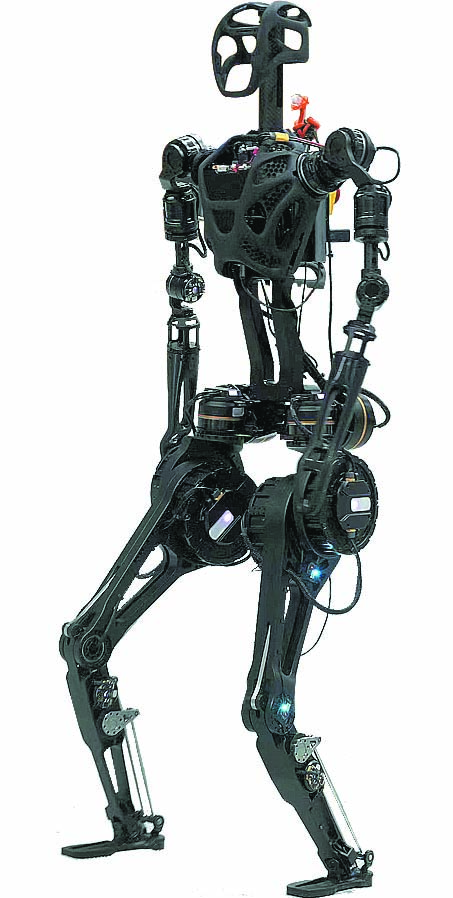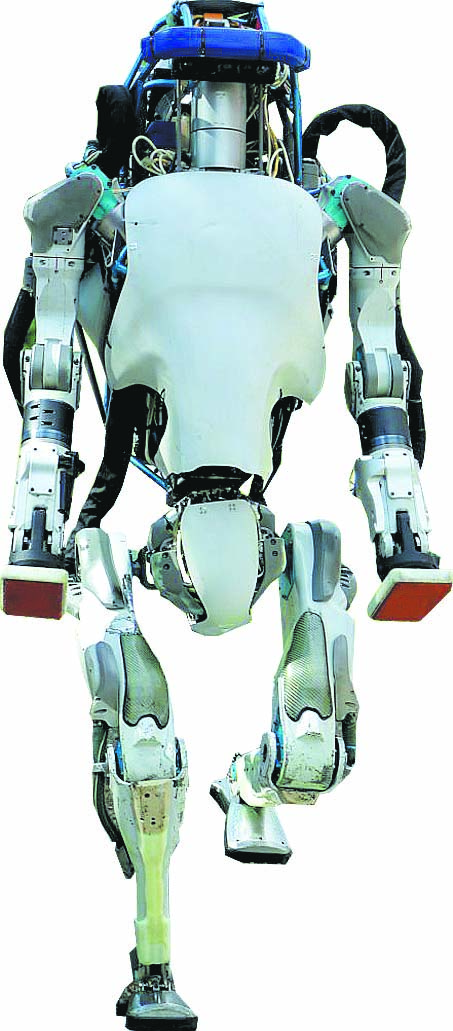Rise of the robots a lift for Shanghai

Industrial use of advanced technology is reaping great rewards for the city
From exoskeletons used in physical rehabilitation, to table tennis training partners and farm and services-industry labor, the lucrative robotics industry is reshaping work practices and production in China.
Shanghai has been at the forefront of the advances in research and development, and production of industrial robots for more than 40 years.
In a hot pot restaurant in the city's People's Square, 11 robots can now be seen helping staff members welcome guests and deliver dishes. The little robots not only offer diners a novel experience, but are saving the owners money on wages.
"The robots can usually deliver three layers of dishes at one time, but a human being can only bring one or two dishes," said Lan Jie, a team leader at the restaurant.
With more than 7,800 cafes and a need for 23,000 baristas, robots are also helping fill staffing shortages in Shanghai's coffee industry.
In Minhang district, a robot developed by Jaka Robotics can make as many as 500 cups of coffee a day and rival a barista in "latte art". It takes two trained baristas eight hours to make 500 cups of coffee, with each earning about 8,000 yuan ($1,108) a month.
"Businesses such as intelligent restaurants, unmanned cafes, and new retailers have the greatest applications for robots," Meng Xiaobo, vice-president of Jaka Robotics, told China Daily.
Li Tong, founder and CEO of Shanghai-based Keenon Robotics, believes robots are designed to replace humans doing repetitive, boring chores.
"Using machines to do work like this allows humans to spend more time on providing better services," Li said, adding that the only requirement for robots to work around the clock is recharging them.
In 2021, China's robot market in the catering sector more than doubled year-on-year to $84 million, with Keenon Robotics, Pudu Robotics, Suzhou Pangolin Robot and Beijing Orion Star Technology taking the lion's share, according to a report by US market research firm International Data Corp.
With a 48.6 percent market share, Keenon Robotics had the highest yearly growth rate of 153.4 percent, the report said.
"We believe the Chinese food-service robot sector has passed its infancy and is becoming a teenager," said Li, whose Shanghai-based company also offers its services and products in North America, Europe, the Middle East, Japan and South Korea.
For Fang Minglun, a tenured professor at Shanghai University, the rise of robots is a dream-made reality. The octogenarian is the driving force behind Shanghai developing its first batch of industrial robots in the 1980s. He has long believed that robots can benefit humans by serving people's all-around needs.
"Back in the 1980s, I wrote an article titled, 'Tools for production and assistants in life'. More than three decades have passed, and I think my vision is still effective," Fang said.
"I believe that the further development of robots must play a very important role in the advancement of human society. To be more specific, they will change our production modes and alter our lifestyles."

Name: Optimus
Manufacturer: Tesla Inc
Height: 172 cm
Weight: 56.6 kg
Capabilities: The robot can walk at a speed of 5 km per hour and carry a load of up to 50 kg. It can move to avoid obstacles, ascend and descend a slope with stability, as well as withstand shocks. Using cognitive intelligence provided by tools such as ChatGPT, the robot is capable of collaborating with humans to complete various movements.
Training, therapy
At Shanghai University of Sport, a table tennis training partner robot is helping players hone their skills.
The device has been mass produced in China since 2020, said Ren Jie, deputy dean of the China Table Tennis College.
Different from previous ball-serving devices, the robot developed by the China Table Tennis College, replicates the experience of competing against a human player. The degree of difficulty of drop shots, spin and ball speed can be altered to fit players' practice needs, Ren said.
"We always wanted to provide a good product that could benefit both our players and average people, and the development of AI(artificial intelligence) has made it possible in the sports arena," Ren said.
In addition to training professional players, the robot — costing about 50,000 yuan — has been used in primary and middle schools, as well as schools for students with disabilities, he added.
Meanwhile, Fourier Intelligence in Shanghai is at the forefront of producing rehabilitation robots with AI exoskeletons that are already being used in hospitals in China and overseas.
The AI exoskeletons enable people with lower-limb disabilities to stand up and walk, while they can also assist in the rehabilitation of people with paralysis to do activities such as grocery shopping.
"China will see rising demand for rehabilitation therapists in the future, but training rehabilitation therapists need a lot of time," said Gu Jie, founder and CEO of Fourier Intelligence. "If we use rehabilitation robots to help therapists do the tedious and strenuous training, our rehabilitation therapists can focus on creating better treatment solutions for patients."
Launched five years ago, Fourier Intelligence's rehabilitation robots are now being used in more than 2,000 hospitals in over 40 countries and regions.
Facing an aging society and labor shortage, Gu sees huge market demand in China for their rehabilitation and other robots.

Name: GR-1
Manufacturer: Fourier Intelligence
Height: 165 cm
Weight: 55 kg
Capabilities: The robot can walk at a speed of 5 km per hour and carry a load of up to 50 kg. It can move to avoid obstacles, ascend and descend a slope with stability, as well as withstand shocks. Using cognitive intelligence provided by tools such as ChatGPT, the robot is capable of collaborating with humans to complete various movements.
Plowing on
Wang Jinyue, the son of a peasant family, started his business with a vision that one day agriculture will no longer be a backbreaking chore.
Seven years ago, he resigned from his position as the operations director of an Internet company and set up Shanghai Sweet AI Technology Co to invest in agricultural AI robots.
His robots cover the complete farming process, including rotary plowing, bedding, planting, watering, weeding and harvesting. They can be controlled by smartphones via the BeiDou Navigation Satellite System and a 5G connection.
The sharp decline in the working population in agriculture is a problem facing all countries.
However, the issue in China is compounded by aging agricultural workers, Li Daoliang, a professor from China Agricultural University told the Shanghai Observer.
Wang believes technology has the solutions. "Although our products are only used in six provinces at the moment, a breakthrough in our supply chain allowed us to launch mass production," he said.
"We are expecting to see thousands, tens of thousands or even 1 million of our robots replacing farmers in the future."

Name:Cloud Ginger
Manufacturer:CloudMinds Robotics Co Ltd
Height:158 cm
Weight:62 kg
Capabilities:Equipped with more than 40 intelligent flexible executors, the robot is capable of listening, speaking, seeing and moving based on multiple cloud-intelligent technologies. It can perform a variety of services including reception work, tour guidance, elderly care, cleaning, education and scientific research.
Battle of the androids
Chinese manufacturers are also wasting no time in producing humanlike robots, the benchmark of the industry.
Humanoid robots are anticipated to meet labor shortages in the manufacturing sector and elderly care, said Li Jing, deputy director of Shanghai University's Shanghai Robot Institute.
Shanghai-based CloudMinds Robotics is one of the Chinese companies trying to get a foothold in the healthcare and elderly care sectors. China is projected to have about 310 million people aged 60 or above by 2035.
CloudMinds is in the process of developing a mobile humanoid robot scheduled to be debuted by 2025, said Wang Bing, co-founder of the company.
Equipped with more than 60 intelligent flexible executors, the robot will be capable of walking on two legs and have the movements and flexibility of a human. This should enable it to do tasks such as helping senior people go up and down stairs.
The company has already launched a humanlike robot with two moving hands that can provide services related to elderly care and cleaning, as well as education and scientific research.
Fourier Intelligence unveiled its latest humanoid robot, GR-1, at the sixth World Artificial Intelligence Conference in Shanghai this month.
Electric vehicle maker Tesla also exhibited its general-purpose worker droid, Optimus. Tesla CEO Elon Musk has projected the robot will sell for less than $20,000.
"The launch of Tesla's humanoid robot prototype, the Optimus, has sparked a heated debate about the outlook of the sector. Some organizations have projected the particular robot will reach a sizable market share in the coming years," said Li Jing, deputy director of the Shanghai Robot Institute.
If hurdles such as product design, uses, technology, affordability and public acceptance can be overcome, Goldman Sachs envisions a market size of up to $154 billion by 2035. The estimate is close to that of the global electrical vehicle market and one-third of the global smartphone market in 2021.

Name: Atlas
Manufacturer: Boston Dynamics
Height: 150 cm
Weight: 89 kg
Capabilities: The robot can deliver high power to any of its 28 hydraulic joints for feats of mobility. Moving at a speed of 2.5 meters per second, it can conduct highly diverse and agile locomotion, and plan movements through complex dynamic interactions. The robot is also capable of doing leaps and somersaults.
Shanghai vision
China has formed a complete robotic industrial chain with sizable scale and quantity, said Shen Nanyan, executive vice-director of the Shanghai Key Laboratory of Intelligent Manufacturing and Robotics at Shanghai University. The innovative application of robots has been phenomenal, she added.
Cao Qixin, a professor at Shanghai Jiao Tong University and director of its Institute of Biomedical Manufacturing and Life Quality Engineering, believes there are reasons for the rapid development of the robotics industry in China, and Shanghai in particular. "Being a manufacturing giant gives China the strength to materialize many of the latest robotic application ideas," Cao said.
In the 1980s, Shanghai Jiao Tong University and Shanghai University began research into the nation's first generation of industrial robots. With China's large talent pool, big corporations and technological strengths, it is easier to introduce robots across various sectors, Cao said.
Earlier this year, Shanghai unveiled a plan to promote its robot industry over the next three years. It aims to have 10 leading industrial robot brands, realize 100 robot application scenarios, and increase the city's robot industrial value to 100 billion yuan.
The targets are part of the city's efforts to spearhead the high-quality development of local industry, promote in-depth integration of robots and artificial intelligence, and use intelligent robots to shore up various industries, said Tang Wenkan, deputy director of the Shanghai Municipal Commission of Economy and Informatization.
Shanghai's industrial robot sector and service robot sector made great progress last year.
Despite the impact of COVID-19, Shanghai saw its industrial robot output grow 6 percent to surpass 75,000 units in 2022, topping all Chinese cities. The use of service robots was applied widely in fields including medical care, construction, agriculture and commerce, Tang said.
Shen, from the Shanghai Key Laboratory, said Chinese robot manufacturers need to strengthen their foundations, differentiate their products and development, and cultivate talent if they are to produce higher-quality products.
Industry stalwart Fang called for more efforts on fundamental research. The robotics industry requires better core technologies to meet the challenges ahead, he added.
"In the meantime, innovative collaborations and integration of state-of-the-art technologies are equally important for the development of the sector," Fang said.
Invest in China Copyright © 2026 China Daily All rights Reserved
京ICP备13028878号-6
 京公网安备 11010502032503号
京公网安备 11010502032503号





